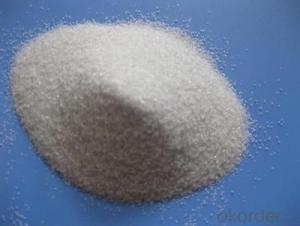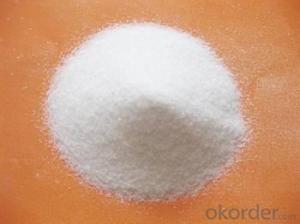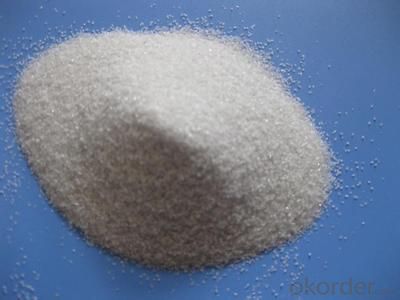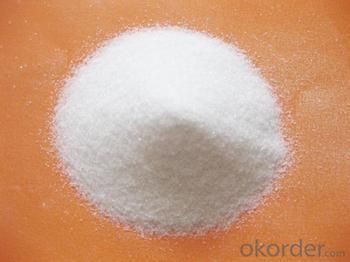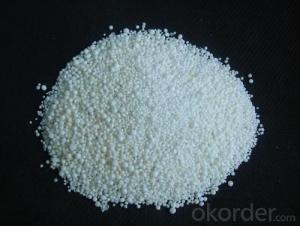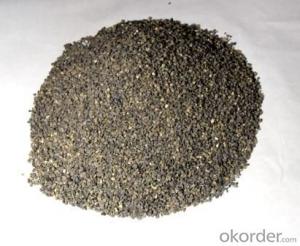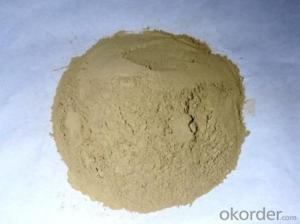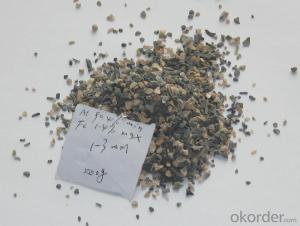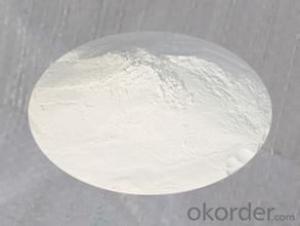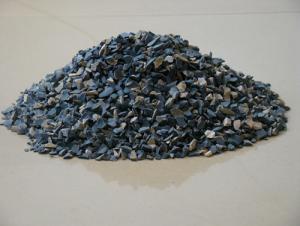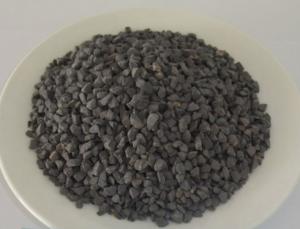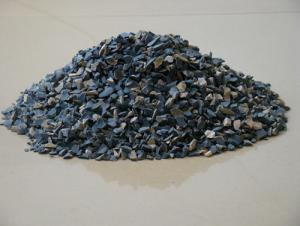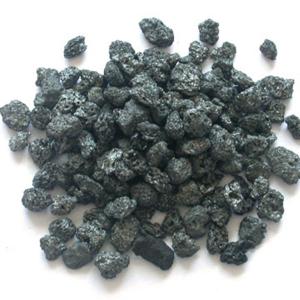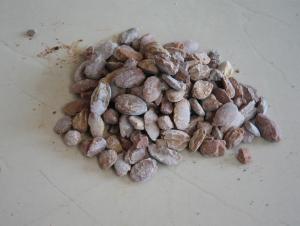Raw Materials for Refractory - Abrasive White Fused Alumina (WFA) for Sand Blasting 60 Mesh
- Loading Port:
- China Main Port
- Payment Terms:
- TT OR LC
- Min Order Qty:
- -
- Supply Capability:
- -
OKorder Service Pledge
OKorder Financial Service
You Might Also Like
Packaging & Delivery
| Packaging Detail: | 25kg/plastic bag, 1mt/jumbo bag or as you require |
| Delivery Detail: | within 7 days after sign the contract or your deposit |
Specifications
white fused alumina
Direct Manufacturer
lapping & polishing media
Ceramic grinding wheels
60 mesh abrasive white fused alumina (WFA) for sand blasting
White Fused Alumina/ WFA
White Fused Alumina, a kind of high-grade refractories, was made from the high quality alumina by melting above 2000 in the electric arc furnace and cooling. It is white with the main crystal phase alpha-Al2O3.The white alumina produced in titling electric arc furnace has the advantage of high bulk density and low porosity and the volume stability and thermal shock resistance can be improved.
Advantages
Flexible price policy
Equipped full line of test method.
Brilliant produce&supply&delivery ability
We passed the certification of ISO9001:2000
White fused alumina has Al2O3 content 99% min
All products will be supplied according to customers different requirement.
The laboratory is certified by government Inspection Bureau, that assures its quality stability.
Technical Data:
Application | specification | major chemical content % | |||||
AL2O3 | Na2O | SiO2 | K2O | Fe2O3 | |||
abrasive | F | 8#-60# | 99.5min | 0.26max | 0.08max |
| 0.06max |
60#-100# | 99.5min | 0.26max | 0.09max | 0.06max | |||
120#-150# | 99.5min | 0.26max | 0.10max | 0.06max | |||
180#-220# | 99.5min | 0.26max | 0.12max | 0.10max | |||
230#-800# | 99.3min | 0.32max | 0.15max | 0.10max | |||
1000#-3000# | 99.1min | 0.35max | 0.18max | 0.10max | |||
refractory | Section sand | 0-1mm | 99.5min | 0.29max | 0.30max | 0.02max | 0.06max |
1-3mm | |||||||
3-5mm | |||||||
5-8mm | |||||||
10-20mm | |||||||
0.3-1mm | |||||||
0-0.3mm | |||||||
1-2mm | |||||||
0.5-1.5mm | |||||||
Fine powder | 100#-0 | 99.0min | 0.40max | 0.30max | 0.03max | 0.20max | |
Moh's hardness | ≥9.0 |
true density(g/cm3) | ≥3.95 |
propotion | ≥3.6 |
porosity | ≤8.5 |
As refractoriness
White Fused Alumina is the main starting material to produce high-grade unshaped and shaped refractoriness and is widely used in the field of iron-steel industry,ceramics,petrochemical industry etc. It is the ideal material to produce the unshaped refractoriness such as large ladle castables,medium and high grade BF trough castables,gunning material,pre-cast shapes and is the main material to produce alumina products such as corundum bricks, corundum and mullite-corundum sagger,refined porous plug bricks, monolithic lance composite nozzle, lining material for high temperature industrial furnaces,etc.
As abrasives
White Fused Alumina can be used as consolidation & coating abrasives, wet or dry sprayed grit, suitable for ultra-precise grinding and polishing in the crystal and electronic industry and can be used to produce high-grade refractoriness. It is suitable to machine high stiffness &high tensile strength materials such as chilled steel, alloyed steel, high-speed steel, high carbon steel, etc. In addition, it can be used as catalyst, insulator, precise foundry sand, etc.
Size available:
Abrasive tool: F10-F220,F230-F1200;P12-P220;
Refractory : 0-1mm,1-3mm,3-5mm,5-10mm;100mesh,325mesh;
Other size is available as required;
Packing:
25kg/bag,40bags/big bag;
1000kg/big bag;
1000kg/big bag with pallet packing;
Other packing is allowed as required.
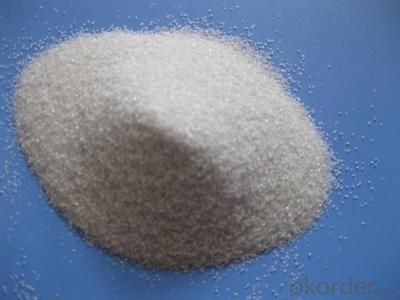
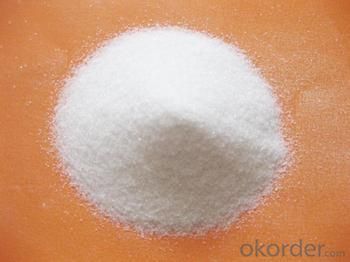
- Q: Does anyone know the characteristics of refractory for glass kiln?
- Refractory is a kind of non-metallic material with refractoriness not less than 1580 ℃, which has better thermal shock resistance and chemical erosion resistance, low heat conductivity coefficient and low expansion coefficient. Refractoriness is the centigrade?temperature of refractory cone specimen wiyhout any load resisting high temperatures without melting down Refractory is widely used in industries like metallurgy, chemical, petroleum, machinery manufacturing, silicates, power, etc., which is mostly used in the metallurgical industry, accounting for 50% to 60% of total output.
- Q: Can anyone tell me what material the first rate fire resistant door is?
- Material of Class A fire doors mainly are steel, wood, steel and wood, and other materials. Fire door is one of the measures of the building fire separation, usually used on the firewall, entrance and exit of staircase or tube well openings, which is required to hane the abilities of smoke insulation and fire insulation. Fire door plays an important role in prevention of the spread of smoke and fire and the reduction of fire loss. Therefore, we must have strict requirements. Fire doors are divided into class A, class B and class C, whose properties of fire-resistant thermal insulation and fire-resistant integrity should be no less than the following values: Class A should be1.50h; class B should be1.0h; Class C should be 0.5h. - stipulations in article 4.5.1.2 in "The New Standard of Fire Doors" GB12955-2008. I hope my answer can help you. Thank you.
- Q: Who knows what is the external wall thermal insulation materials for level A fireproofing?
- In general, external wall thermal insulation materials can be divided into level A and level B by combustion grading. Level A is non-combustible material, and level B is combustible materials. A few years ago, the fire of the CCTV Building and Shenyang Hotel put the blame on the level B material. At present, the level A material is widely used, and the prices of same level A materials may be even cheaper than the level B material. Level A material is generally divided into thermal?mortar, phenolic foam board, rock wool board and foam cement board. I hope this information can be helpful to you. Hope you adopt.
- Q: How long is the fire endurance of Grade A fire resisting shutter
- Based on national standards GB 14102-2005 specifications. It is specified in GB 14102-2005 provides that: The fire resisting shutter whose fire endurance is not less than 3h is AAA fire resisting shutter when the unexposed surface temperature rise is used as judging condition. Therefore, it is required that the fire endurance of Grade A fire resisting shutter is 3h.
- Q: For refractory knowledge. What is the ratio of clay ramming?mass?
- Soil aggregates, dispersing agent, water reducing agent, plasticizer, binding agent and powder! ~ Bone meal feed approximately 6, OK
- Q: Does refractory belong to stone, building materials or other?
- It belongs to building materials.
- Q: Does anyone know about the classification standards of B2-level fireproof and thermal insulation materials?
- 1.The insulation materials with A-level combustion performance: EPS Hairong module, rock wool, glass wool, foam glass, ceramic foam, foam cement, closed-cell perlite, etc. 2. The insulation materials with B1-level combustion performance: specially-treated extruded polystyrene boards(XPS)/ specially-treated Polyurethane(PU), Phenolics, Polystyrene rubber powder particles,etc. 3. The insulation materials with B2-level combustion performance: Expanded polystyrene sheets(EPS), Extruded polystyrene boards(XPS), Polyurethane(PU), Polyethylene(PE), etc. See the 2009 measures of building technology. The A-level insulation material is only fireproof, the insulation performance of it is worse than that of organic XPS \\\\ EPS material. Currently I think that the best insulation material should be Hairong EPS module, it not only achieves the requirement of insulation but also fulfills the goal of fireproofing, and the comprehensive unit price of it is not expensive. The insulation materials in the domestic market have their own disadvantages, you'd better take the building demands into consideration, and use the materials that are within the acceptable range.
- Q: What's the heat conductivity coefficient, specific heat capacity and density of the refractory material of magnesite-chrome brick and magnesia-alumina brick respectively?
- It is suggested that you find some samples of well-known manufacturers, such as Ogilvy and Mather Group, and that will be more correct.
- Q: What's the commonly used refractory material for ladle?
- Commonly used types of refractory material for ladle are as follows: high-alumina brick, clay brick, magnesia-carbon brick, aluminum carbon brick, magnesia chrome brick, spinel brick, corundum brick, high alumina castables, aluminum silicon carbide carbon castables, refractory castables for ladles, magnesium castables, magnesia chrome spray coating, dry vibration materials, etc. Hope it's helpful for you!
- Q: Can anyone tell me what is the material of which the mould for refractory is made?
- Wooden mould will be used when refractories die is produced in small batch or composition of the refractory is complex. At the time of mass production, steel mould wil be used. The steel mould is a kind of imprint mold or cold mould. The cold mould, according to the working conditions of the products it manufactures, should have high hardness, strength, wear resistance, sufficient toughness and high hardenability. Commonly used steel types include high-carbon and low-alloy steel, high-carbon and high-chrome steel, chromium molybdenum steel and tungsten carbon chromium steel. You can choose them based on your needs
Send your message to us
Raw Materials for Refractory - Abrasive White Fused Alumina (WFA) for Sand Blasting 60 Mesh
- Loading Port:
- China Main Port
- Payment Terms:
- TT OR LC
- Min Order Qty:
- -
- Supply Capability:
- -
OKorder Service Pledge
OKorder Financial Service
Similar products
Hot products
Hot Searches
Related keywords
